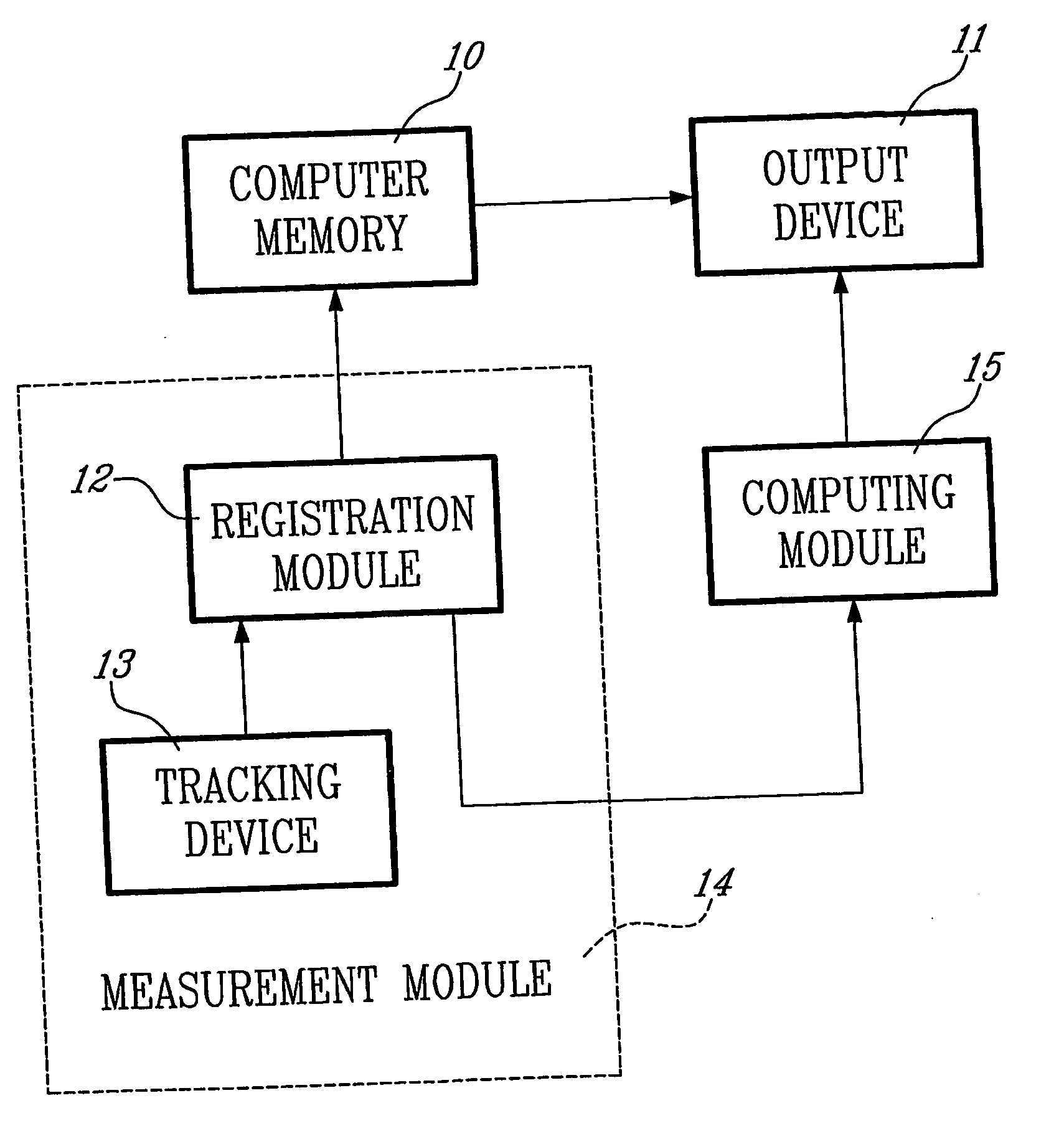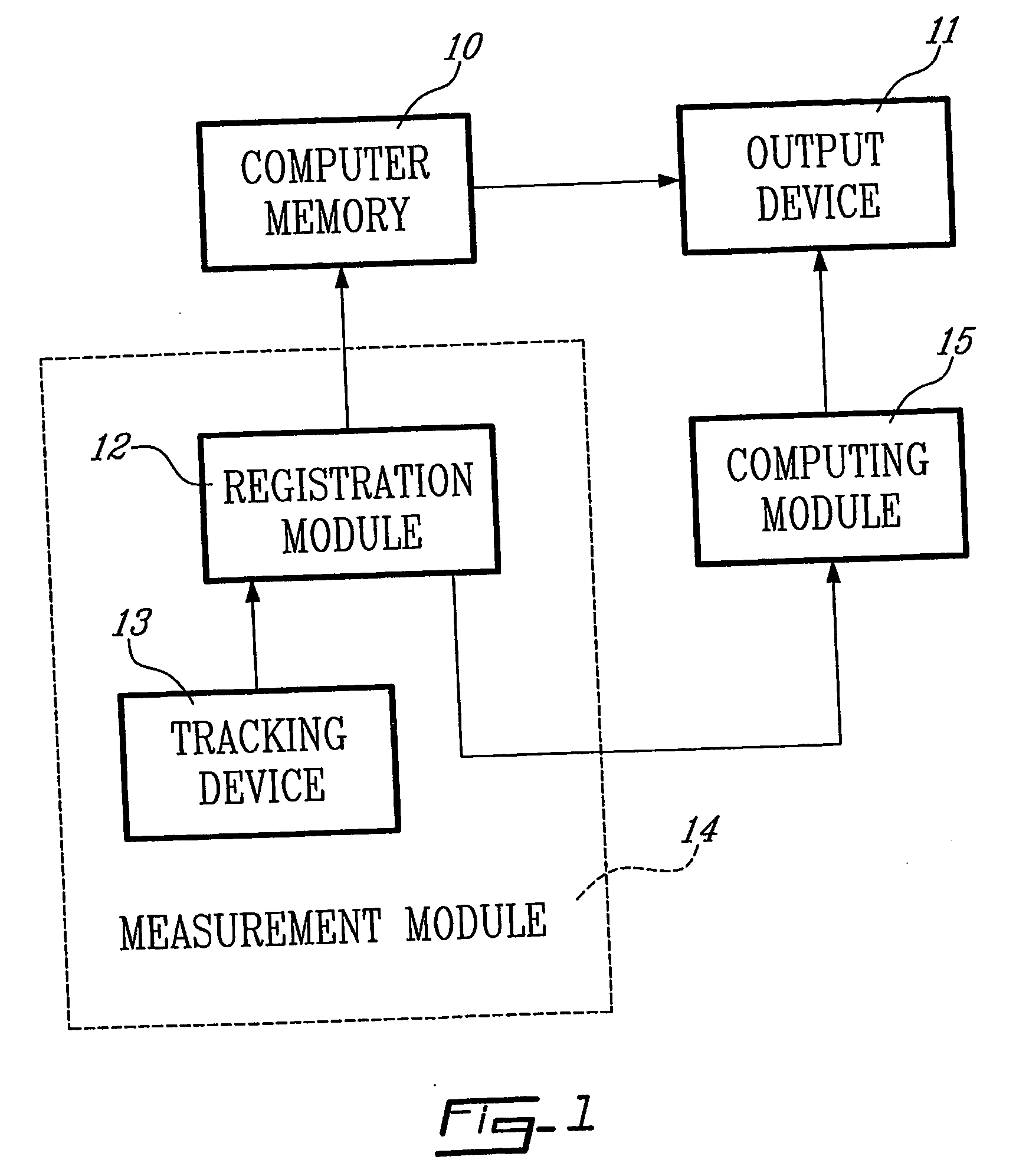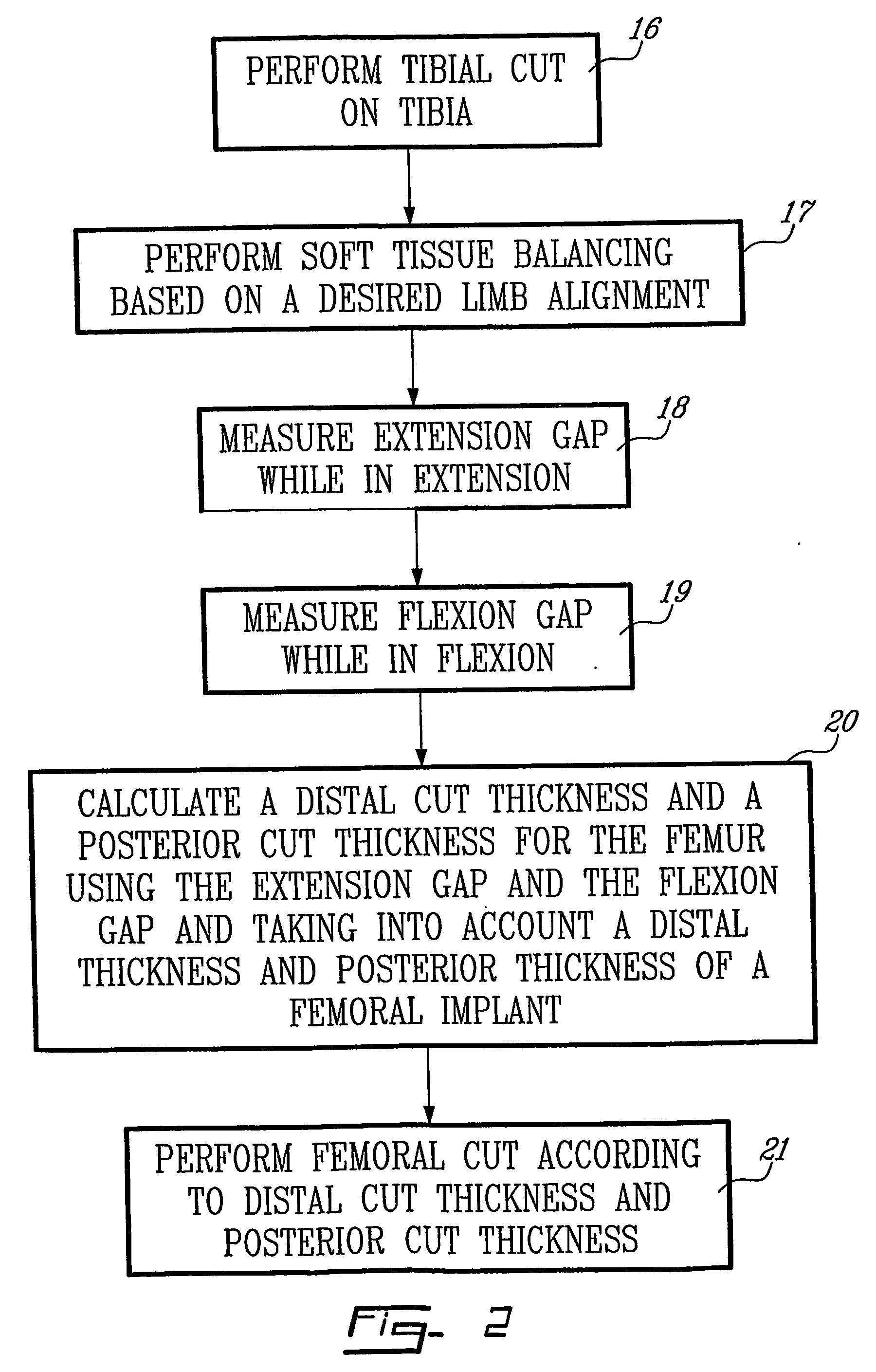Determining femoral cuts in knee surgery
a technology of femoral cuts and knee surgery, applied in the field of computer assisted surgery or imageguided surgery, can solve the problems of respecting the comfort of the implant for the patient and the duration of the implant in suitable condition to perform the designated function, and achieve the effect of prolonging the implant lifetim
- Summary
- Abstract
- Description
- Claims
- Application Information
AI Technical Summary
Benefits of technology
Problems solved by technology
Method used
Image
Examples
Embodiment Construction
[0025] The life-span of an implant or a prosthesis is dependent on the wear and tear to which it is submitted. In order to reduce the damage done to an implant over the years, it is desirable to perform soft tissue and gap balancing in the knee when placing the implant. Soft tissue balancing refers to the release of the ligaments which hold the femur and tibia together such that the tension in the medial and lateral ligaments is substantially even. This provides an ideal limb alignment for the femur and tibia. Symmetric gap balancing refers to the gap between the femur and the bone left after the tibia and the femur have been cut and before the implants have been placed. It is desirable to have the gap rectangular, i.e. symmetric, as well as equivalent in flexion and in extension, i.e. balanced.
[0026] In accordance with the invention described herein, a system is provided to automatically calculate the distal cut thickness and posterior cut thickness to be done to the femur. The sy...
PUM
 Login to View More
Login to View More Abstract
Description
Claims
Application Information
 Login to View More
Login to View More - R&D
- Intellectual Property
- Life Sciences
- Materials
- Tech Scout
- Unparalleled Data Quality
- Higher Quality Content
- 60% Fewer Hallucinations
Browse by: Latest US Patents, China's latest patents, Technical Efficacy Thesaurus, Application Domain, Technology Topic, Popular Technical Reports.
© 2025 PatSnap. All rights reserved.Legal|Privacy policy|Modern Slavery Act Transparency Statement|Sitemap|About US| Contact US: help@patsnap.com



